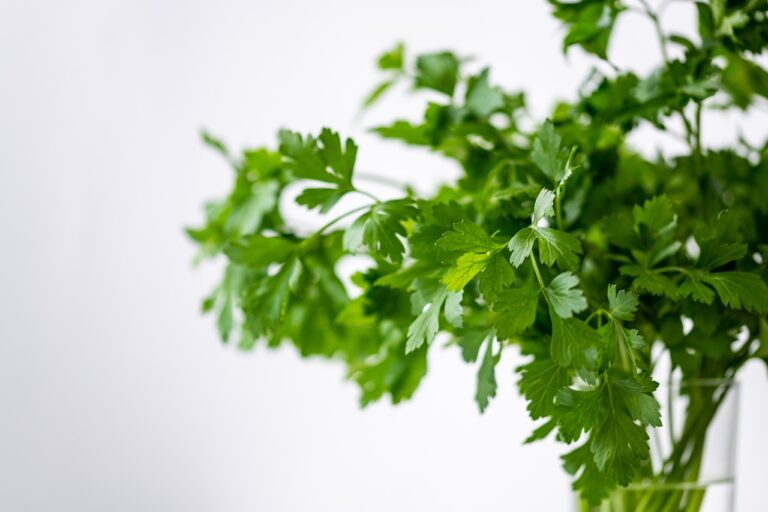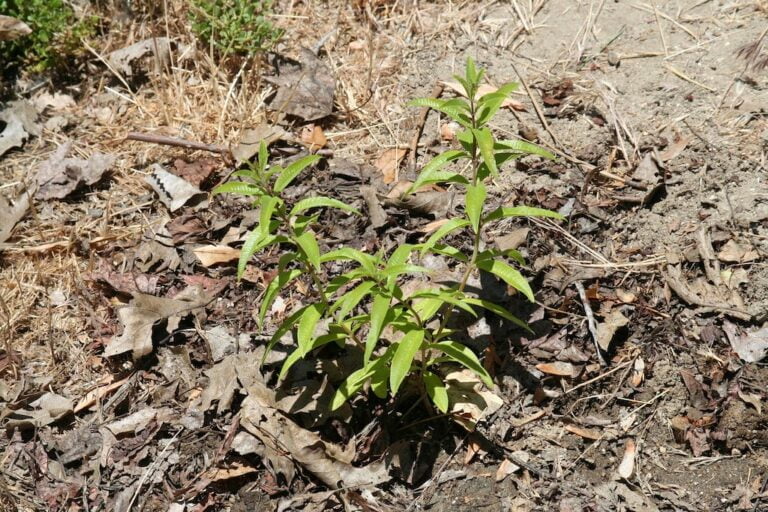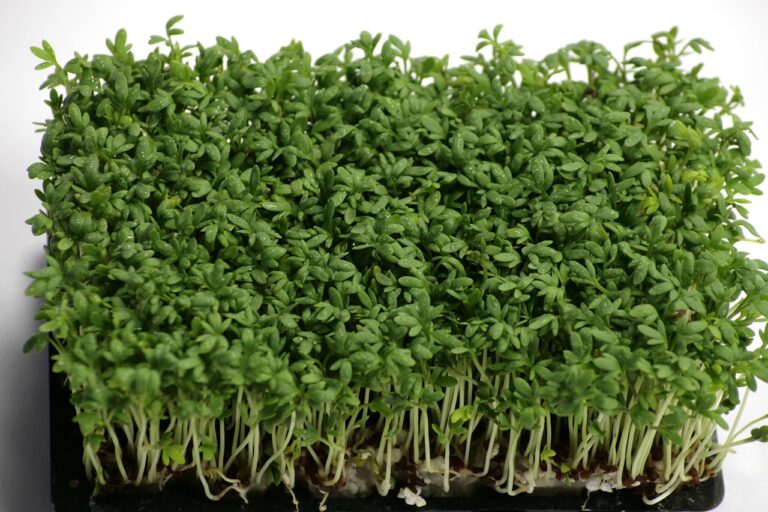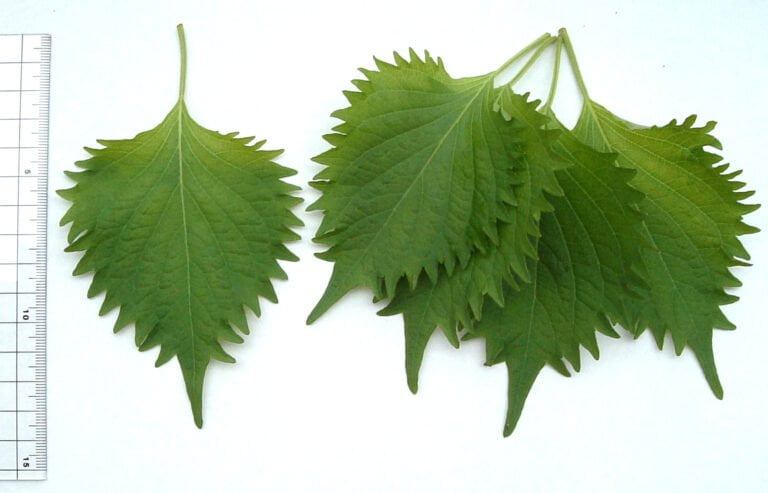Curry Leaf
Originating from India and Sri Lanka, the botanical gem Murraya koenigii, or Curry Leaf, improves South Asian cuisine with its unique flavor. Fresh leaves trump dried for superior taste when starting cooking. They bloom in hot oil, releasing aromatic oils essential in tadka for a flavorful base. Rich in antioxidants, vitamins, and minerals, they aid digestion and promote hair growth. Thriving in well-draining soil and full sun, these plants need regular pruning for best growth. If intrigued by this aromatic wonder, there’s much more to uncover about its culinary, health, and cultivation aspects.
Overview of Curry Leaves
Originating from the lush regions of the Indian subcontinent and Sri Lanka, curry leaves are a staple in South Indian cooking renowned for their unique and vibrant flavor. These leaves, botanically known as Murraya koenigii, are an essential ingredient in many dishes due to their distinct taste profile. With a combination of herbal, floral, woodsy, and citrusy notes, curry leaves add depth and complexity to a wide array of recipes.
In South Indian cuisine, fresh curry leaves are highly favored over dried ones for their superior flavor and aroma. The fresh leaves impart a fragrant and zesty essence that enhances the overall taste of dishes. The process of drying can diminish the potency of the essential oils present in the leaves, resulting in a less impactful flavor when compared to their fresh counterparts.
The flavor of curry leaves is an important component in many traditional South Indian dishes, where they are often added at the beginning of the cooking process to infuse their essence into the entire dish. Whether tempered in oil to release their aromatic compounds or finely chopped and sprinkled as a garnish, curry leaves play a crucial role in enhancing the overall taste profile of a wide range of culinary creations.
Culinary Uses of Curry Leaves
Curry leaves, with their fragrant and tangy essence, play a crucial role in enriching the flavors of various South Asian dishes, particularly in South Indian cuisine. In Indian cuisine, these leaves are a staple, commonly used in dishes like dal to impart a distinct earthy and herbal flavor. When visiting South Asian grocery stores, one can often find fresh curry leaves, which are preferred for their intense aroma and flavor.
The process of blooming curry leaves in hot oil is a common practice to extract their aromatic oils, infusing the dish with a rich fragrance. This technique improves the overall taste profile, making the dish more flavorful and aromatic. Additionally, ground curry leaves are readily available in the market, offering a convenient way to incorporate their unique taste into various recipes.
In South Asian cooking, curry leaves are essential in the tadka process, where they are added to hot oil along with spices to create a flavorful base for many dishes. Their tangy undertones add depth and complexity to the dish, making them a prized ingredient in traditional cuisine. Whether used fresh or ground, curry leaves are a versatile herb that brings a touch of authenticity to South Asian culinary creations.
Benefits of Curry Leaves
Abundant in antioxidants, vitamins, and minerals, curry leaves offer a variety of health benefits that contribute to overall wellness and vitality. These green leaves are not only a staple in Indian cuisine but also a powerhouse of medicinal properties. One of the key benefits of curry leaves is their role in aiding digestion. They help in reducing gastrointestinal issues and promoting a healthy gut environment.
Furthermore, curry leaves are renowned for their positive impact on hair health. They are often used in hair care products for their ability to stimulate hair growth and strengthen hair follicles, preventing hair fall and improving overall hair quality. The anti-inflammatory properties of curry leaves make them effective in combating inflammation in the body, potentially reducing the risk of chronic diseases.
Studies also suggest that curry leaves possess anti-cancer properties, further underscoring their importance in a holistic approach to wellness. The rich aroma and flavor of curry leaves not only improve the taste of dishes but also provide a range of health benefits that have been acknowledged in traditional medicine for centuries. Incorporating curry leaves into your diet can be a simple yet effective way to boost your overall health and well-being.
Growing Curry Leaf Plants
For successful growth of curry leaf plants, ensuring well-draining soil and ample sunlight is crucial. Curry leaf plants, scientifically known as Murraya koenigii, require specific care to thrive and produce an abundance of aromatic leaves for culinary use. Here are some key points to keep in mind when growing curry leaf plants:
- Essential Soil Drainage: Curry leaf plants prefer soil that drains well to prevent waterlogging, which can lead to root rot and other issues. A mixture of regular potting soil and sand or perlite can help achieve the desired drainage.
- Full Sun Exposure: These plants thrive in full sun conditions, so it’s important to place them in a location where they receive at least 6-8 hours of sunlight daily. Insufficient sunlight can result in leggy growth and reduced leaf production.
- Propagation Techniques: Curry leaf plants are commonly propagated from seeds, which should be fresh for better germination rates. Additionally, young seedlings can be pinched to encourage branching and a bushier appearance.
- Trimming Methods: Regular pruning is beneficial for curry leaf plants to maintain their shape, promote bushier growth, and stimulate new leaf development. Pruning also helps remove any dead or damaged foliage, keeping the plant healthy.
- Harvesting Leaves: Leaves can be harvested as needed for culinary purposes, but it’s crucial to avoid overharvesting, especially from young plants. Allow the plant to establish before harvesting leaves regularly.
Cooking Tips With Curry Leaves
In terms of cooking with curry leaves, grasping how to maximize their flavor is crucial. Infusing these aromatic leaves in hot oil can unleash their full potential before adding them into your dishes. Fresh curry leaves are recommended for their strong taste and aroma, enhancing your culinary creations to new heights.
Flavor Enhancer Tips
Infusing the flavor of dishes with curry leaves involves enriching aromatic oils by blooming them in hot oil before incorporating them into the cooking process. Fresh leaves are essential for a potent aroma and flavor infusion. Here are some flavor enhancer tips using curry leaves:
- Aroma: Release the delightful fragrance of curry leaves by blooming them in hot oil.
- Flavor: Intensify the taste profile of your dish by incorporating curry leaves during the cooking process.
- Crispy Topping: Fry curry leaves separately until crispy to add a crunchy texture to your dishes.
- Tadka: Use curry leaves in the tadka process to infuse dishes with their unique taste.
- Versatile Usage: Whether as a base ingredient or a finishing touch, curry leaves offer a flavorful twist to traditional recipes.
Storage and Freshness
To preserve the freshness of curry leaves for extended periods, proper storage techniques are essential. Fresh curry leaves can be stored in the refrigerator for about 2 weeks and up to 2 months in the freezer. To maintain their freshness, place the leaves in a zipper-lock bag before storing in the fridge. Dried curry leaves, on the other hand, can last for around 6 months when stored correctly. They can be made at home for a more robust flavor or bought pre-ground. Ground curry leaves are also available in the market for added convenience in cooking. When describing the aroma of curry leaves, they are often likened to mustard seeds, providing a unique and distinctive fragrance to culinary dishes.
Where to Buy Curry Leaves
You can obtain curry leaves at South Asian grocery stores or through online vendors. These fragrant leaves are a staple in South Asian cuisine, often used to improve the flavor and scent of dishes. If you prefer the convenience of online shopping, various vendors offer fresh, dried, or ground curry leaves for your culinary needs. Here are some options to explore:
- Local South Asian Grocery Stores: Visit your nearest South Asian grocery store to find fresh curry leaves. These stores often stock a variety of fresh produce, including curry leaves, catering to the local community’s culinary preferences.
- Online Vendors: Investigate online platforms that specialize in selling spices and herbs. Many online vendors offer fresh curry leaves that can be delivered to your doorstep, ensuring convenience and accessibility, especially if you do not have a local supplier nearby.
- Specialty Spice Shops: Some specialty spice shops, inspired by renowned chefs like Floyd Cardoz, may also carry high-quality curry leaves. These shops often prioritize freshness and source their ingredients meticulously to provide customers with premium products.
- Farmers Markets: In some regions, farmers markets may have vendors selling fresh herbs, including curry leaves. Visiting a local farmers market can be a great way to connect with local producers and source fresh ingredients for your cooking.
- Organic Food Stores: If you prefer organic produce, consider checking out organic food stores in your area. They may offer organic curry leaves, ensuring that you cook with high-quality, pesticide-free ingredients.





